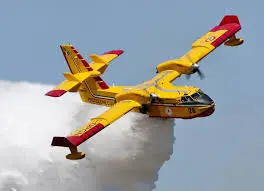A recent incident involving a Quebec water bomber fighting wildfires in Los Angeles has brought attention to the strict regulations surrounding the use of unmanned aerial vehicles (UAVs) in the Caribbean. The CL-415 plane, sometimes called a “super scooper”, was grounded after colliding with a civilian drone in restricted airspace, causing significant damage to its wing (https://www.cbc.ca/news/canada/montreal/quebec-sopfeu-plane-grounded-1.7427777). This incident underscores the importance of adhering to UAV regulations to ensure safety and prevent interference with critical operations.
In the Caribbean, several areas have restrictions on UAV usage due to safety, security, and privacy concerns. For instance, Barbados has imposed a 12-month prohibition on the importation of drones to allow authorities to develop a comprehensive legal framework governing their use. Similarly, other countries in the region have designated specific areas where UAVs are prohibited, such as over highways, beaches, stadiums, and government buildings.
In Trinidad and Tobago, the use of unmanned aerial vehicles (UAVs) is restricted in several areas. These no-fly zones include airports, military installations, government buildings, and other critical infrastructure. Additionally, UAVs are prohibited from flying over several areas. We encourage readers to visit the Trinidad and Tobago Civil Aviation Authority (TTCAA) website for more details. (https://caa.gov.tt/licensing-certification/unmanned-aircraft-systems-uas-drones/?form=MG0AV3)
The recreational use of UAVs is restricted in several areas in Caribbean countries to prevent potential accidents and misuse. Unauthorized UAV flights can pose significant risks to public safety, interfere with emergency operations, and compromise privacy. For example, flying UAVs near firefighting efforts, as seen in the recent Quebec plane incident, is considered a federal crime and can result in severe penalties.
Authorities in the Caribbean emphasize the need for responsible UAV use and adherence to regulations to ensure the safety and security of all residents and visitors. As technology continues to evolve, consistent and clear guidelines will be essential to manage the growing presence of UAVs in the region.
By understanding and respecting these restrictions, UAV enthusiasts can enjoy their hobby while contributing to a safer and more secure environment for everyone.


